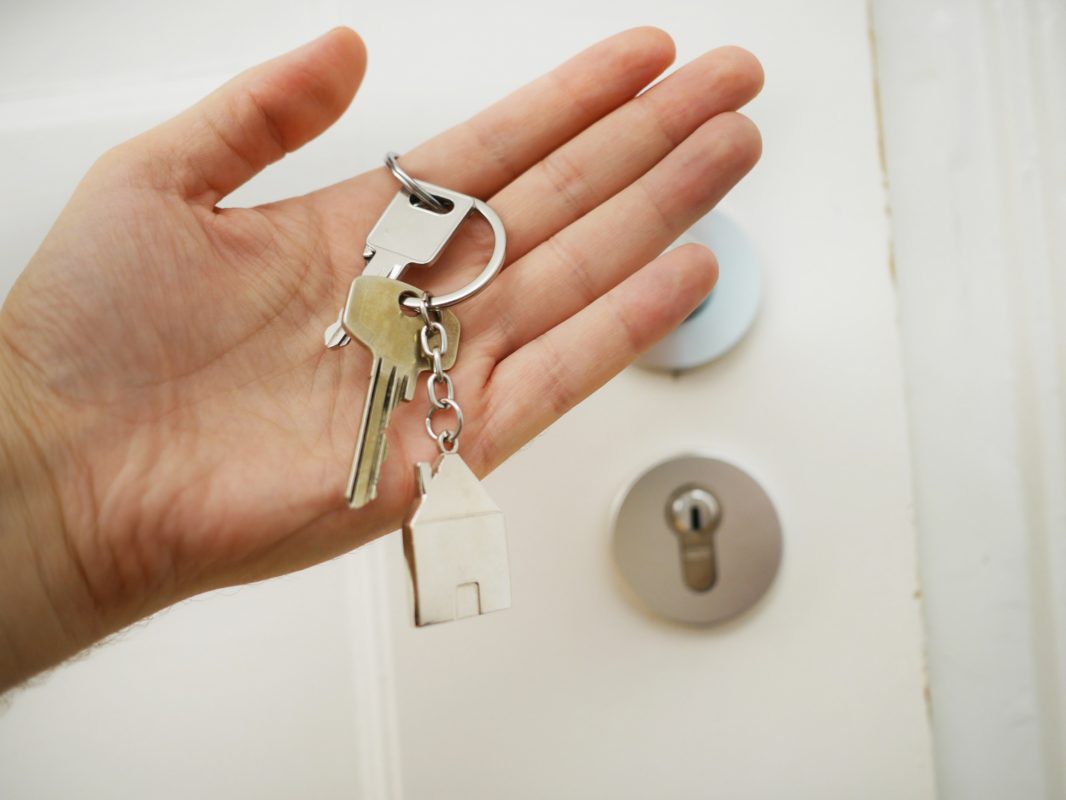Ever find yourself scrolling through social media and thinking, “Wow, my mortgage could be more like my playlist—constantly refreshed, optimized, and perfectly in tune with my vibes”? Welcome to the ultimate guide on mortgage refinance—a topic that might sound as dry as a toast without avocado but doesn’t have to be. In this guide, we’re diving deep into the different types of mortgage refinance, breaking down the jargon and covering everything from rate-and-term to the ever-enticing cash-out options. Whether you’re a millennial looking to optimize your financial future or a Gen Z powerhouse gearing up for first homeownership, grab your favorite iced coffee and let’s decode the mortgage maze together.
The Different Types of Mortgage Refinance: A Simple Guide Table of Contents
Mortgage Refinancing 101: The Basics Explained
The Different Types of Mortgage Refinance: Your Options Unpacked
When and Why Should You Consider Refinancing?
Key Factors to Consider Before Taking the Leap
Practical Steps for Initiating Your Mortgage Refinance Journey
Tools and Strategies to Optimize Your Refinance Decision
Real-Life Stories: Millennials and Gen Z Refi Wins
Resources and Community Support: Your Next Steps
Your Journey to a More Flexible Financial Future
Mortgage Refinancing 101: The Basics Explained
Let’s start with the fundamentals. Mortgage refinancing is the process of replacing your existing home loan with a new one. Think of it as updating your phone’s software—it’s all about improvement, efficiency, and in some cases, unlocking shiny new features (or cash)! Refinancing is an opportunity to secure a better interest rate, modify your loan term, or even tap into your home equity for other financial needs.
When you refinance, your old mortgage is paid off entirely, and you take on a new mortgage. The reasons can be as varied as our playlists:
- Lower Interest Rates: Helping you save money on interest over the life of the loan.
- Change in Loan Term: Shorten for faster equity buildup or lengthen to lower monthly payments.
- Cash-Out Options: Unlock a lump sum of cash by borrowing against your home’s equity.
- No-Closing-Cost Options: Some lenders might let you refinance without upfront costs (with a slight trade-off).
The best part? Knowing your options can empower you to create an optimal loan that fits your personal goals—whether that’s saving for a dream vacation, investing in your future, or simply having a bit more cash in hand to enjoy life.
The Different Types of Mortgage Refinance: Your Options Unpacked
Refinancing isn’t a one-size-fits-all kind of deal; there are several types, each designed to meet specific financial needs. Let’s break them down one by one.
Rate-and-Term Refinance
This is the bread and butter of refinancing. With a rate-and-term refinance, you change the interest rate, the loan term, or both—all without accessing any of your home’s built-up equity as cash. The goal here is simple: secure a lower interest rate or a better loan term to reduce your overall costs. For many, swapping a high-interest loan for a lower-interest one means significant savings over the life of the mortgage.
Imagine this option as upgrading your streaming plan: you’re still watching the same show (owning your home), but with a faster, more efficient connection (a better rate or term) that saves you money and boosts performance.
Cash-Out Refinance
Feeling financially adventurous? The cash-out refinance lets you tap into your home’s equity by refinancing for more than you currently owe on your mortgage. The extra cash you receive can be used for home improvements, consolidating debt, or even funding a side hustle. This refinance option is like having a secret bonus track on your favorite album—unexpected, exciting, and with potential for major value.
However, a word of caution: while a cash-out refinance can be a smart move if done wisely, it does come with the risk of overleveraging your most valuable asset. So, before you treat your home like a cash ATM, make sure you have a solid plan in place.
Streamline Refinance
Also known as the “express lane” for refinancing, the streamline refinance process is available for certain government-backed loans like FHA and VA mortgages. With fewer hoops to jump through (no full appraisal or income verification in some cases), it’s designed to be faster and hassle-free. It’s ideal if you’re looking to lock in a lower rate quickly.
Think of it as the fast-food version of refinancing—quick, convenient, and efficient, though it may not offer every customization that a traditional refinance might.
No-Closing-Cost Refinance
Love the idea of refinancing but dread the thought of paying hefty closing costs? The no-closing-cost refinance spreads these fees over the life of the loan, meaning you won’t need to pay all that cash upfront. It’s like getting a free upgrade with a slight increase in your monthly subscription—suddenly, that refund from your old loan isn’t so distant!
However, keep in mind that while you save money at closing, the higher interest rate might offset some of the initial benefits. Always run the numbers to see if this option aligns with your financial goals.
Hybrid Refinance Options
Some lenders even offer hybrid products that blend elements of rate-and-term and cash-out refinancing. These can be particularly attractive if you need a modest cash infusion while still benefiting from a lower rate or a better term. It’s the financial equivalent of a smoothie—a blend of flavors and benefits designed to keep you refreshed.
Exploring hybrid options ensures that you’re not forced to choose between saving money and accessing cash—they can sometimes offer the best of both worlds.
When and Why Should You Consider Refinancing?
So, how do you know if it’s time to take the plunge into the refinancing pool? In a nutshell, refinancing could be a game-changer if you’re looking to:
- Lower Your Monthly Payments: A lower interest rate or an extended repayment term can free up some extra cash each month.
- Save Big on Interest: Even a slightly lower rate can add up to huge savings over the life of your loan.
- Access Your Home’s Equity: Whether for renovations, paying off high-interest debt, or simply investing in your future, a cash-out refinance can be a powerful financial tool.
- Consolidate Debt: Using a refinance to pay off other debts might simplify your finances under a single, more favorable payment plan.
- Switch Loan Terms: Perhaps you want to pay your mortgage off faster, or maybe you’d prefer a lower monthly commitment to free up funds for other ventures.
Here’s the kicker: while refinancing can offer significant benefits, it’s not a one-size-fits-all solution. The decision should be rooted in your unique financial situation, long-term goals, and even your lifestyle needs. It’s like picking the perfect playlist for your commute—you need to match the mood with the moment.
Consider your credit score, the amount of equity in your home, and current market conditions. Sometimes, even if you’re not getting a dramatically lower rate, the shift in your loan term might be worth the effort. Also, factoring in closing costs and potential fees is crucial. A brilliant refinance on paper might not be brilliant in practice if those extra costs outweigh the benefits.
Key Factors to Consider Before Taking the Leap
Before you dive into the sea of refinancing options, here are some critical elements to evaluate like you would check the specs on the latest smartphone:
1. Current Interest Rates
Interest rates are the heartbeat of any mortgage, and even a shift of a fraction of a percent can have a huge impact. Keep an eye on market trends and understand that timing can make all the difference.
2. Your Credit Score and Financial Health
A strong credit score not only helps secure lower rates but also widens the range of products available to you. If your score isn’t shining as brightly as you'd like, it might be worth taking a few months to tidy up your financial record before refinancing.
3. Home Equity
Your home’s current market value compared to what you owe will inform your refinancing options. More equity means better opportunities and less risk when opting for a cash-out modality. Lenders love home equity because it reduces their risk.
4. Closing Costs and Fees
Refinancing isn’t free—think of it as an investment that requires upfront costs like appraisal fees, application fees, and legal charges. Weigh these fees against the potential long-term savings to see if the math adds up. Sometimes, these costs are subtly built into the new interest rate, so ask your lender for clarity.
5. Loan Term and Future Plans
Are you planning to settle down in your current home for years to come, or is a move on the horizon? Changing your loan term might make sense if you’re in for the long haul. On the other hand, if you might sell your home within a few years, refinancing might not be as beneficial.
6. Lender Reputation and Terms
Not all lenders are created equal. Do your research, read reviews, and compare borrower experiences. A lender’s transparency about fees, customer service quality, and overall support can make your refinancing journey a breeze—or a headache.
Practical Steps for Initiating Your Mortgage Refinance Journey
Ready to make a move? Here’s your step-by-step blueprint to navigate the refinancing process from start to finish.
Step 1: Assess Your Financial Health
Start by gathering all your financial documents. Track your credit score, current mortgage details, and a rough estimate of your home’s equity. It’s time to get a realistic picture of where you stand.
Step 2: Research and Compare Lenders
Dive into the online reviews, compare interest rates, fees, and customer service ratings. Platforms and forums where fellow millennials and Gen Zers share their experiences can be a goldmine of real-life insights.
Step 3: Run the Numbers
Use online calculators to plug in your numbers and model different scenarios. What will your monthly payments look like with a lower interest rate? How long until you break even after refinancing? Running these numbers can give you a clearer picture of potential savings.
Step 4: Gather Your Documentation
Expect to share income statements, tax returns, bank statements, and details about your current mortgage. The more organized you are, the smoother the process.
Step 5: Lock In Your Rate
Once you find a deal that vibes with you, ask about locking in the interest rate. A rate lock can protect you from market fluctuations as you finalize your paperwork.
Step 6: Close the Deal
You’re in the home stretch! Work with your lender to review and sign the final documents. Once everything’s in order, your old mortgage will be replaced by the new one, marking the beginning of a fresh financial chapter.
By following these steps, you take control of your financial future and ensure that refinancing isn’t just a buzzword but a strategic move toward long-term financial freedom.
Tools and Strategies to Optimize Your Refinance Decision
In today’s digital age, you have a toolbox full of online resources to help you make an informed decision. Here are some popular tools:
- Mortgage Calculators: Test different scenarios with various interest rates and loan terms. These calculators are perfect for seeing immediate savings or cost implications.
- Rate Trackers: Keep tabs on current interest rates to capture the best deal. Many apps notify you when rates drop to your pre-set target.
- Budgeting Apps: Monitor your overall finances to understand how refinancing fits into your bigger financial picture.
- Online Reviews and Forums: Leverage community knowledge from mortgage forums, Reddit threads, and personal finance blogs where real-life experiences are shared with honesty and humor.
Beyond tools, developing a strategic mindset is key. Consider the broader impact of refinancing on your financial goals, be it saving for a future home, investing, or planning for retirement. Sometimes, the best decisions come from a holistic view of your finances.
Remember, refinancing isn’t just about securing a lower rate—it's about aligning your mortgage with your life’s evolving chapters.
Real-Life Stories: Millennials and Gen Z Refi Wins
Nothing puts theory to the test like actual success stories. Here are a few tales from fellow young homeowners who have transformed their financial outlook through refinancing:
The “Budget Boss” Story
Meet Alex, a 29-year-old digital marketer who saved enough money on his monthly mortgage payments to travel the world. By opting for a rate-and-term refinance when the market dipped, Alex not only reduced his monthly outgoings but also unlocked extra cash that funded his passion for adventure. His story shows that a savvy refinance might be the secret sauce behind turning a routine mortgage into a ticket for life’s great experiences.
The “Smart Cash-Out” Move
Then there’s Jamie, a tech startup enthusiast who decided it was time to upgrade both career and home life. Jamie used a cash-out refinance not to splurge recklessly, but to invest in home improvements that dramatically increased the property’s value. Moreover, Jamie channeled some of the cash into a promising side business. This careful recalibration of her finances allowed her to diversify her assets while maintaining a manageable monthly payment.
The “Streamline Success” Experience
For some, convenience is everything. Taylor, a first-time homeowner with a government-backed FHA loan, opted for a streamline refinance when interest rates dropped. The process was quick and hassle-free—a perfect fit for Taylor’s fast-paced lifestyle. With minimal documentation required, Taylor could lock in a lower rate and spend more time focusing on the career and passions that drive day-to-day success.
Each of these stories underscores that refinancing is not a one-dimensional maneuver. It can be tailored to meet unique financial ambitions, whether that means paying less each month, boosting your cash reserves, or repositioning your home as a strategic asset.
Resources and Community Support: Your Next Steps
Navigating the refinancing landscape is easier when you’re not doing it alone. There are plenty of resources and communities available to support your journey. Start by checking out online platforms that offer:
- Interactive Calculators: As mentioned, these tools help you run the numbers and forecast potential savings, making the decision process less of a guessing game.
- Financial Blogs and Videos: Look for content creators who break down complex financial topics into bite-sized, relatable pieces. Many bloggers share their refinancing experiences, giving you an insider’s view.
- Community Forums: Websites like Reddit, NerdWallet, and BiggerPockets have vibrant communities where real people discuss their mortgage wins and challenges in authentic, down-to-earth language.
- Professional Consultation: Consider scheduling a consultation with a trusted mortgage broker who can provide personalized advice based on your unique financial goals and current market conditions.
In addition to digital resources, don’t underestimate the value of local community workshops or financial literacy events. Many community centers and banks offer free seminars that explain complex topics in simple terms—perfect for both curious millennials and Gen Zers just starting their financial journeys.
Remember, the best financial decisions are informed decisions. By tapping into these resources, you’re not just refinancing your mortgage—you’re investing in a network of knowledge and support that can empower you for years to come.
Your Journey to a More Flexible Financial Future
Embracing mortgage refinance is about more than just numbers and percentages—it’s a step toward taking control of your financial destiny. Refinancing your home loan might sound intimidating at first, but with the right information and strategy, it can be a powerful tool in constructing a smarter, more flexible financial plan.
Think of it as reimagining your financial playlist: you’re remixing an old track into a fresh hit that better suits your evolving tastes and life goals. Whether you’re looking to lower your monthly payments, cash in on your home’s equity, or simply want a more advantageous loan term, each type of refinance brings its own set of perks and considerations.
As you move forward, keep the bigger picture in mind. Refinancing is one piece of an intricate financial puzzle that includes budgeting, saving, investing, and planning for the future. Be sure to weigh the costs against the benefits, consult experts when needed, and lean on community resources to guide you.
At the end of the day, your journey toward a more optimized financial future starts with informed decision-making. Celebrate each step you take—whether it’s a small rate drop or a major strategic shift—and remember: you have the power to craft a home loan that works as hard as you do.
Frequently Asked Questions About Mortgage Refinance
We know that refinancing can raise a lot of questions. Here are some of the most frequently asked questions to help you navigate your options with confidence.
1. What exactly is mortgage refinancing?
Mortgage refinancing is the process of replacing your current home loan with a new one. This new loan can offer a lower interest rate, a different term length, or a cash-out option, depending on your personal financial goals.
2. How does a rate-and-term refinance differ from a cash-out refinance?
A rate-and-term refinance adjusts the interest rate and/or loan term without giving you additional cash. In contrast, a cash-out refinance allows you to borrow more than what you owe on your current mortgage, giving you access to the extra equity in cash.
3. What are streamline refinances and who qualifies?
Streamline refinances are designed for government-backed loans (like FHA or VA loans) and require less documentation than traditional refinancing. They’re perfect for borrowers looking for a quick, low-hassle way to secure a better rate.
4. Are no-closing-cost refinances really free?
While no-closing-cost options mean you won’t need to pay fees upfront, those costs are typically rolled into a slightly higher interest rate. It’s important to run the numbers to ensure it fits your financial plan.
5. How do I know if refinancing is the right financial move for me?
Evaluate your current mortgage rate, your financial goals, and the amount of equity in your home. If the potential savings outweigh the costs, then refinancing could very well be your ticket to financial optimization.
6. Will refinancing affect my credit score?
The application process for refinancing can involve a temporary dip in your credit score due to hard inquiries. However, if you make timely payments on your new loan, any impact is typically short-lived.
7. How long does the refinancing process take?
Typically, refinancing can take anywhere from 30 to 45 days, though the timeline can vary based on the lender, your documentation, and market conditions.
8. Can I refinance more than once?
Yes! Many homeowners refinance multiple times over the life of their mortgage depending on market trends and personal financial changes.
These answers should help clear up some common doubts, but remember—each financial situation is unique. Don’t hesitate to reach out to a trusted lender or financial advisor for advice tailored just for you.
Your Path to Financial Flexibility and Finesse
The mortgage refinance journey isn’t just about tweaking numbers—it’s about reclaiming financial control and crafting a mortgage that truly works for you. Through understanding the different types of refinance options and evaluating which aligns with your unique goals, you can tailor your home loan to reflect your personal style and future ambitions.
Each refinance option, be it the straightforward rate-and-term or the opportunistic cash-out refinance, is designed with your financial empowerment in mind. It’s about redefining what homeownership means in today’s fast-paced economic landscape—infusing it with creativity, bold decisions, and the smart use of resources. There’s an undeniable sense of freedom that comes from knowing your mortgage isn’t a fixed burden but a flexible instrument in your overall financial strategy.
So, whether you’re eyeing that lower interest rate to boost your savings, or planning on consolidating debts to streamline your budget, every step you take is a leap toward an empowered financial future. Embrace the journey with the confidence of a savvy millennial or Gen Z finance pro—you’ve got the data, the tools, and now the know-how to make informed, landmark decisions with your home and your future.
Here’s to a future where your mortgage works as hard as you do—a future filled with smart choices, community support, and empowerment. Deny the notion that refinancing is intimidating, and instead see it as an opportunity to reset your financial track, ultimately giving you a freer, more flexible lifestyle.













